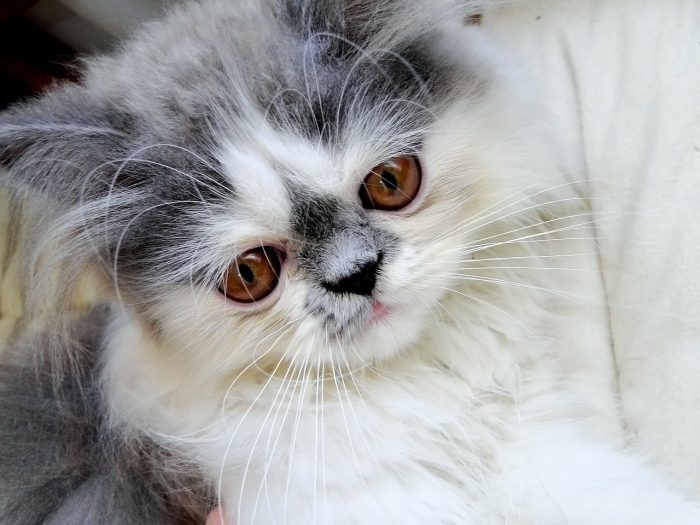Conjunctivitis, otherwise known as pink eye, is a relatively common eye infection that can affect dogs and cats. In order to treat conjunctivitis properly, it is important to understand what the infection is, some common causes and symptoms, and treatment options available.
What is Conjunctivitis?
According to Vet Street, “conjunctivitis is the medical term used to describe inflammation of the conjunctiva — the soft tissues that line the inside of the eyelids and the white portion of the eye.” It can present itself in a number of ways and has varying levels of intensity, but is usually characterized by running eyes and discharge.
While all animals can get pink eye, some breeds face a higher risk than others. For example, tight-faced cat breeds like Persians and Himalayans often have chronic conjunctivitis because their nose is shorter and their eyes run more. Dogs that have chronic eye staining, which can lead to pink eye, include Shih Tzus and Pomeranians.
Common Causes of Conjunctivitis in Pets
Conjunctivitis can be caused by genetic and environmental conditions. However, many times the infection is a result of a larger medical issue. For example, dogs and cats may experience pink eye as a result of an upper respiratory tract infection. Viral conjunctivitis can be caused by systemic illnesses, such as feline HPV or canine distemper, may also cause pink eye. There might also be other eye issues, such as a cyst or irritation, to blame.
In addition to health causes, pink eye can be the result of environmental irritants, trauma to the eye (such as a scratch or poke from another animal), a foreign body in the eye or seasonal allergies. Figuring out what is causing your pet’s pink eye is the first step in treating it. According to vets, the most common environmental causes of pink eye in pets include:
- Airborne irritants, such as cigarette smoke, fur around the house, dust, and perfumes
- Illnesses that affect the whole body, with pink eye being one symptom of a larger issue
- Trauma to the eye, which is especially common with dogs
- Dry eye, a medical condition caused by inadequate tear production
Common Symptoms of Conjunctivitis in Pets
Pink eye presents itself in a number of ways, but some of the most common symptoms include:
- Excessive discharge from the eyes, including pus and mucus
- Squinting
- Red eyes
- Swollen eyelids or area around the eye
If you notice your cat or dog scratching their eye more than normal, rubbing up against things to help satiate their itch, or any of the above symptoms, contact your vet immediately. While pink eye generally doesn’t cause any worse issues, it’s important to take care of your pet early and effectively to stop further infection.
Treating Conjunctivitis in Pets
Treating pink eye will depend on the severity of the infection, the causes, and the animal’s past medical history. Your vet will likely perform an examination of the eyes and look for any wounds, scratches, or anything out of the ordinary. They may use a solution called fluorescein stain, which is a dye that glows under blue light. The dye will adhere to any scratch or wound on the animal’s cornea and show where the problem is.
After examination, your vet might prescribe antibiotic eye drops or ointments that will help surface-level or bacterial conjunctivitis. If the pink eye is the result of another illness, though, your vet will have to do a further examination and may prescribe antibiotics, anti-inflammatory medications or other prescriptions.
Most cases of pink eye will improve within a few weeks with the drops available. In rare instances, however, your pet may require surgery if there was more permanent damage done to the cornea.
If after examination, your vet determines that the pink eye is caused by an environmental factor, such as allergies, they may recommend a limited diet or limited exposure to other animals that may spread pink eye. For example, some indoor cats react to springtime allergies and therefore should be monitored during this period for signs of pink eye. Likewise, it is possible for dogs to get infected by going to communal dog parks or other areas with a lot of animals.
Preventing Conjunctivitis in Pets
Even after your pet is treated for their pink eye, it is important to take steps to prevent future infections. Depending on what your vet determines, it may be necessary to change your dog or cat’s diet, routine, or living environment. Contact your vet if you notice your animal’s eyes acting up or if you would like some tips on how to create a safe, irritant-free space for your furry friend.






